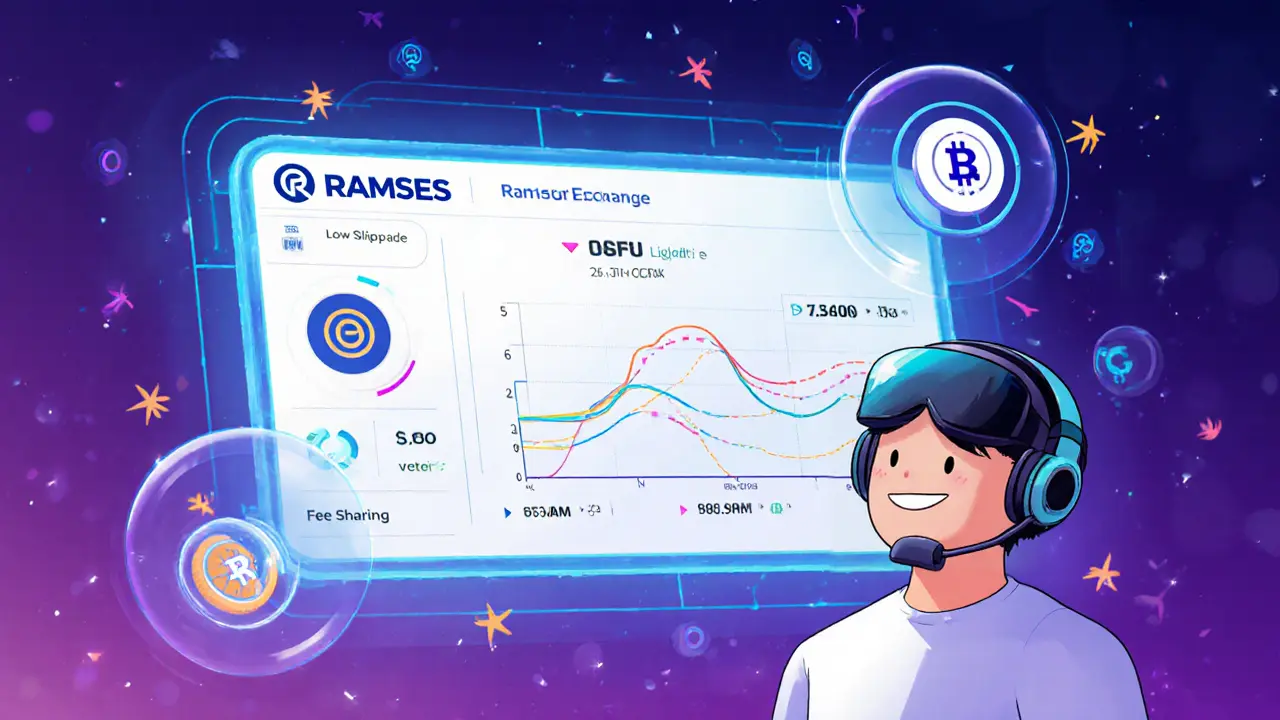In-depth Ramses exchange review covering tech, tokenomics, multi-chain rollout, user guide, pros/cons, and FAQs for crypto traders.
DEX – Your Gateway to Decentralized Trading
When working with DEX, a peer‑to‑peer crypto trading platform that runs on blockchain smart contracts. Also known as Decentralized Exchange, it removes the need for a central intermediary, letting users swap tokens directly from their wallets. This model reshapes how we think about market access, security, and ownership. DEX platforms let anyone become a market maker, and they empower traders to keep full control of their assets.
A core piece of any DEX is the Liquidity Pool, a collection of token reserves that powers on‑chain swaps without order books. Also called Pool, it supplies the depth needed for trades of any size. The pool’s size, token ratio, and fee tier directly influence slippage and price impact, so understanding how pools work is crucial for both casual traders and liquidity providers. Liquidity pools also generate fees for providers, turning idle assets into yield sources.
Behind every pool sits a Smart Contract, self‑executing code that enforces swap rules, fee distribution, and security checks. Known as Contract, these contracts ensure that trades happen exactly as programmed, without human interference. Audits, formal verification, and upgrade patterns are the safety nets that protect users from bugs or exploits. For developers, mastering smart‑contract design means building DEX features that are both efficient and trustworthy.
Dynamic Fee Models and Their Impact
Not all DEXs charge the same rate. A Dynamic Fee Model, an algorithm that adjusts trading fees based on market volatility, pool utilization, or token pairs—sometimes called Adaptive Fees—aims to balance trader costs with liquidity‑provider rewards. When demand spikes, fees rise to protect the pool from rapid depletion; when activity eases, fees drop to attract more trades. Projects like Meteora DAMM v2 on Solana showcase how bin‑based liquidity and real‑time fee tweaking can boost capital efficiency and lower impermanent loss.
Putting these pieces together, a DEX encompasses liquidity pools, requires smart contracts, and is influenced by dynamic fee models. A trader who knows how pools work, trusts contract audits, and picks a fee structure that matches their strategy will get better price performance and lower risk. Whether you’re chasing yield, swapping tokens, or building a new market, the fundamentals covered here set the stage for deeper dives.
Below you’ll find a curated set of guides, reviews, and technical deep‑dives that flesh out each of these concepts. From immutability basics to real‑world airdrop strategies, the articles are organized to help you apply what you just read and fast‑track your DEX journey.

